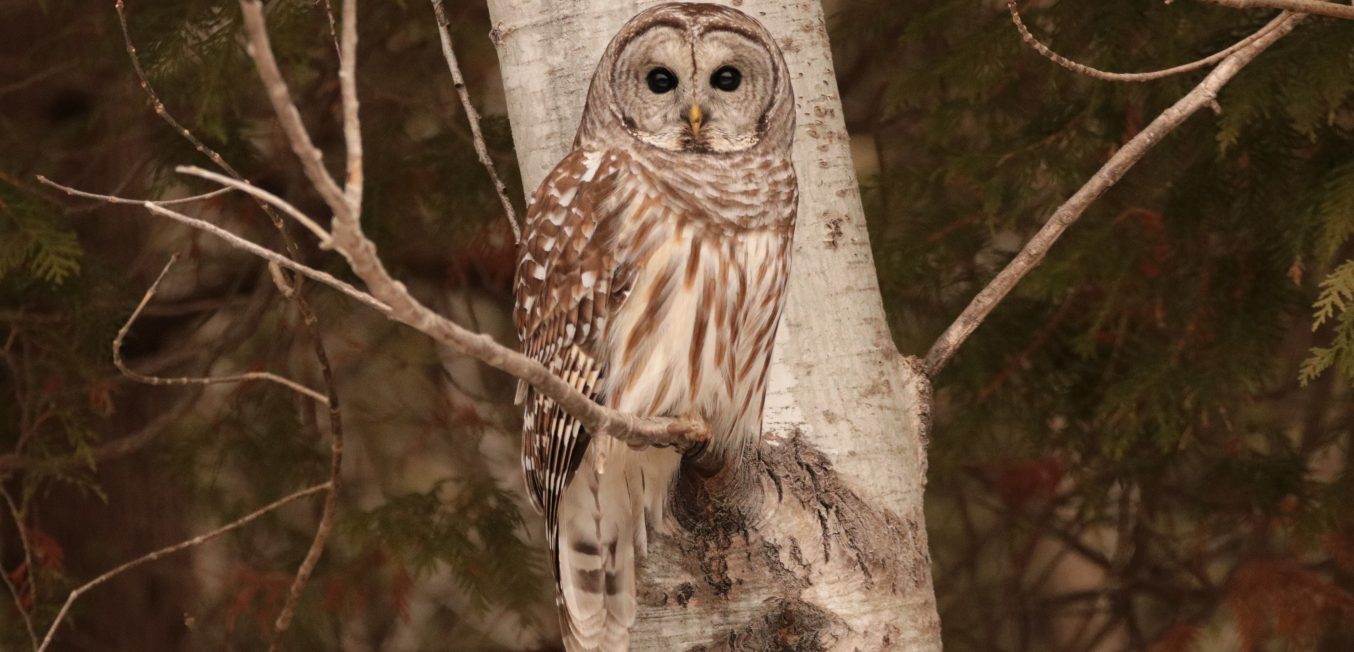Our January meeting was attended by 35 people via Zoom, where we learned All About Owls by Marcie Jacklin.
Marcie volunteers at the Owl Foundation and always picks up information through those efforts. People are usually quite curious about owls since they can be so mysterious and nocturnal. Owls are associated with death, wisdom and being a messenger.
- Owls can be almost the same size as their prey
- They have asymmetrical ears which they can move to change their hearing radius
- Their feathers are adapted for silent flight
- In many species, female owls sit on the eggs in the next and male brings food for her and later for the nestlings.
- Binocular vision with forward facing eyes gives them better depth perception
- They have 14 neck vertebrae (humans have 7)
- The openings in their vertebrae which allow the arteries to pass about 10x the diameter of the artery
- Adaptations to opening in their circulatory system which allows rotation without cutting off blood to the brain which allows them to rotate their heads and necks up to 270 degrees.
Here are some facts and stats about some of the owl species in Ontario.
Great Horned Owl:
- Second heaviest in Ontario. Bigger than a Crow but smaller than a Canada Goose.
- Mostly monogamous
- Average 2 eggs. Incubation is on average 33-35 days. Fledge in 5-6 weeks.
- Most diverse prey profile
- Favourite food is skunks
Eastern Screech-owl:
- Small, about the size of a robin.
- Excellent in camouflage
- Eggs are laid in 2 day intervals
- Average clutch size is 4.5. Average 4 weeks to fledge.
- Mortality in the first year is 70%
Short-eared Owl:
- Medium size, about the size of a crow
- Species of Special Concern, mostly due to their habitat
- Will hunt during the day
- Month like wing beat
- Vole are favourite food
Long-eared Owl:
- Medium size, about the size of a crow.
- Facial Disks – concave so forms a circular paraboloid that collects sound waves and directs them towards the owl’s ears
Barred Owl:
- Large own, larger than a crow but smaller than a Canada Goose.
- Mature forests is preferred habitat
- They will use a nest box
- Food is mostly small mammals but they will also eat birds, reptiles and amphibians
Snowy Owl:
- The heaviest owl in Southern Ontario. Larger than a crow.
- Like big open vistas
- Hunt at all hours
Northern saw-whet Owl:
- Smallest owl, about the size of a robin
- Migratory and also a winter residents
If you are on our email list, you will receive a recording of the Zoom presentation where you can learn about the other owl species of Ontario.
Featured photo of a Barred Owl taken by Josiah Vandenberg.

